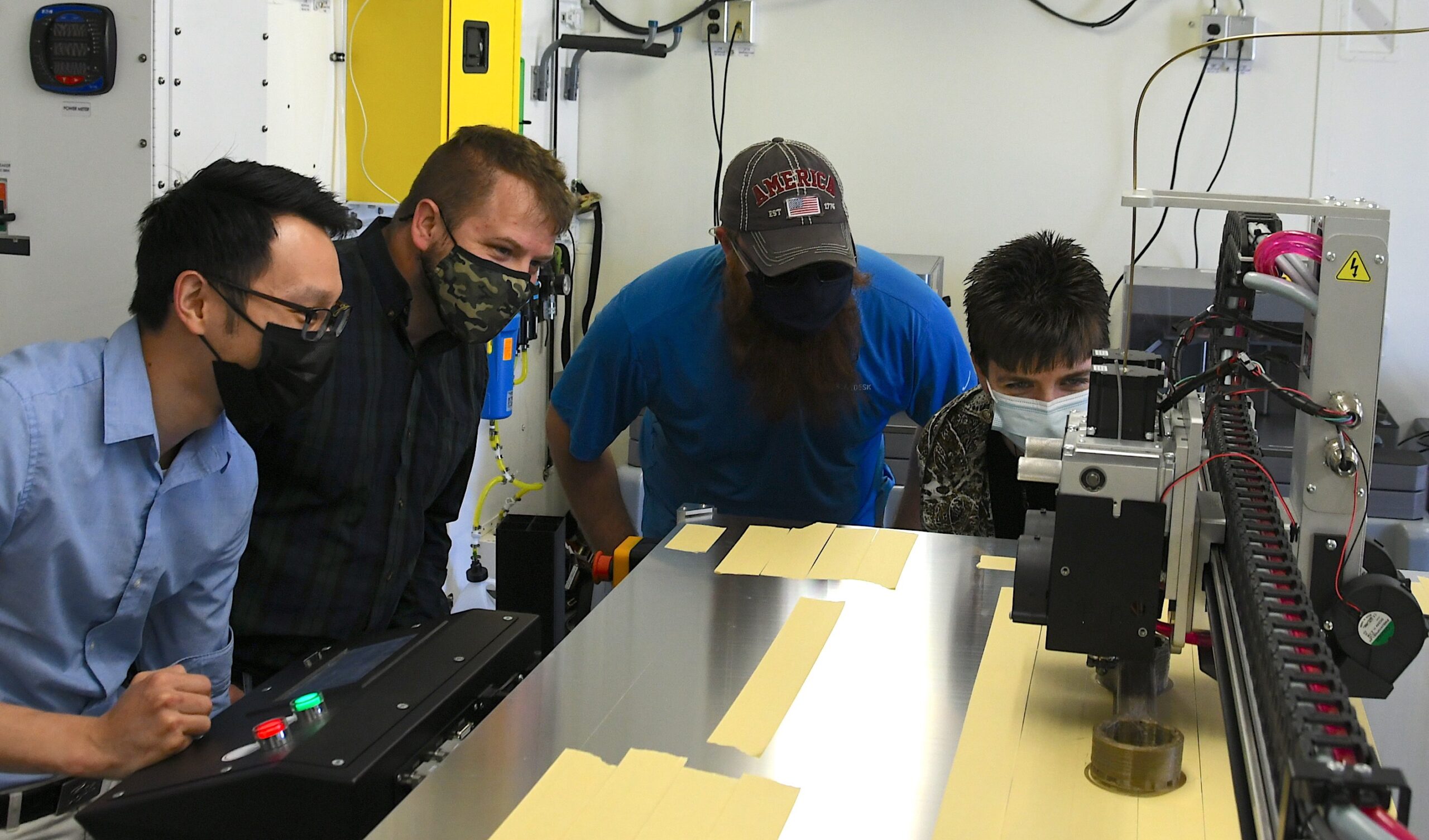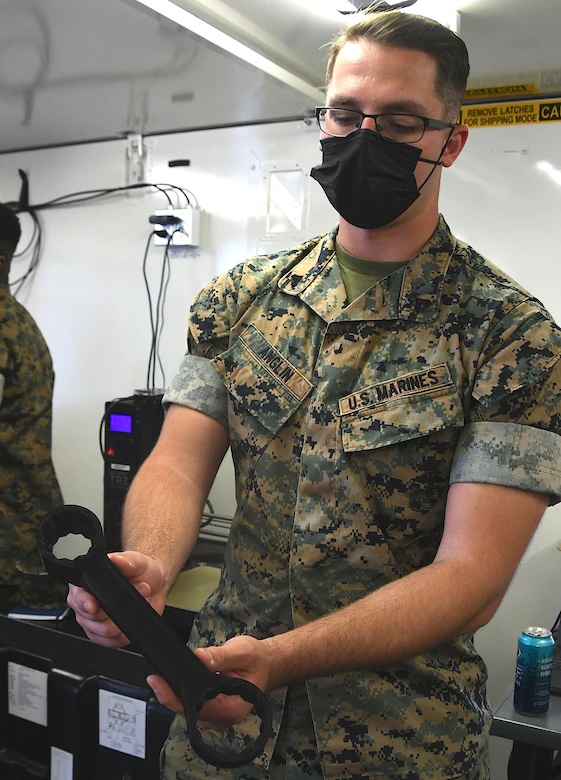Marine Corps Tactical Systems Support Activity hosted a team of design experts who tested the network connectivity of the portable expeditionary fabrication lab, otherwise known as XFAB, on Camp Pendleton, April 5-9, 2021.

The XFAB is a self-contained, transportable additive manufacturing lab that can deploy with battalion-level Marine maintenance units. The 20-by-20-foot shelter is collapsible for easier transport and houses five 3D printers, a laser scanner, a laser cutter and a computer design software system that enables Marines to fabricate replacement and repair parts in an expeditionary environment.
“MCTSSA offers a great opportunity to exercise the XFAB on the [Marine Corps Enterprise Network] and capture the messaging traffic and data packing messages in real time,” said Robert Davies, project officer for Fabrication Equipment under the Program Manager for Supply and Maintenance Systems at Marine Corps Systems Command. “The test directors and support staff at MCTSSA were a pleasure to work with.”
The goal of the testing event was to evaluate the connectivity of the Marine Corps’ closed computer network to determine if any adjustments are needed before reaching final operational capability and delivering labs to the Fleet Marine Forces in June 2022.
XFAB has been in development stages for approximately five years. It is designed to provide Marines a way to innovate by creating their own manufacturing tools, parts and signage. This unique capability can be employed in forward-deployed locations when specialty and hard-to-find parts are not readily available.
“MCTSSA is a great place for this kind of testing and demonstration,” said Lt. Col. Michael Liguori, commanding officer of MCTSSA. “Our location makes it easy for fleet units to visit and see the layout of the equipment first-hand. We’re proud to support the Supply and Maintenance Systems program manager and their team as they move closer to fielding this new capability to the operational forces.”
Impact and Implementation
Each lab comes equipped with two Lulzbot TAZ Workhorse 3D Printers, two Markforged X7 3D printers, one 3D Platform 3000 Series Printer, and one Epilog Fusion Pro 32 Laser Cutter and a Quantum FAROArm S 3D laser scanner. The XFAB also comes standard with three laptops, two workstations and one 55-foot LED television screen.

When integrated into a Marine Expeditionary Force, the XFAB will reduce the maintenance battalion’s logistics footprint by eliminating the need to transport large amounts of spare parts.
“As this technology and overall asset is brand new to the FMF, the maintenance community is extremely excited to receive their assets and begin use of the 3D scanning and printing capabilities,” said Davies. “While some FMF units have 3D printers, those assets were procured with unit funds.”
The XFAB capability is an MCSC Program of Record and will be a supported asset in the fleet, which will make integration for deployments much easier, Davies said.
Demo Days
During the testing event at MCTSSA in early April, senior leaders and Marines from 1st Marine Logistics Group, 1st Light Armored Reconnaissance Regiment, 3rd Amphibious Assault Battalion and 3rd Marine Aircraft Wing got a first-hand look at the equipment and how they can manufacture parts and products.
The XFAB container runs on generator or shore power, and takes a team of four Marines two-to-three hours to set up and tear down. It weighs about 10,500 pounds fully equipped and can be transported via the Logistics Vehicle System Replacement or a commercial flatbed truck.
A New Tool in the Tool kit for FMF
By design, the XFAB and its components are to be operated by a Marine Machinist (MOS 2161) as their primary duties include support of unit maintenance to include fabrication, repair or modification of equipment. However, the XFAB is composed of several workstations that would require just one Marine to be present to operate the equipment and tools.
Several items can be printed and manufactured, including the detonation cord connector, SABER handgrip removal tool, radio handset covers, M320 hammer strut tool, reinforced high-mobility multipurpose wheeled vehicle door handles and a universal load stud wrench for use with all generators.
“Due to the solid MCEN design from our supporting establishments, Naval Surface Warfare Center Crane and Carderock, we have had no redesign efforts required and have passed all testing while at MCTSSA with no outstanding issues to resolve,” Davies added.
A future design is under development with a more tactical version of XFAB called Tactical Fabrication and will soon approach its fielding decision, Davies added. This system will be slightly limited in capability but will be modular, stored in pelican cases, and is specific to a particular MOS.
The current requirement is to deliver 21 XFAB units. II Marine Expeditionary Force is scheduled to receive the first one sometime in mid-2022.
By Amy Forsythe, Public Affairs Officer, MCTSSA

